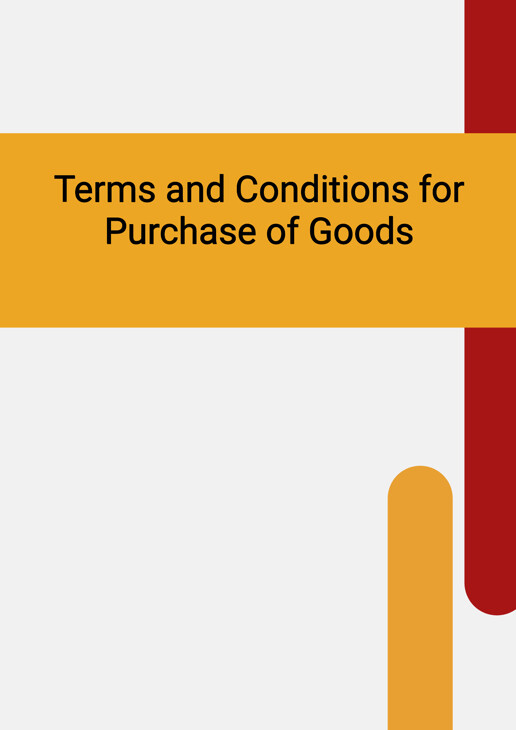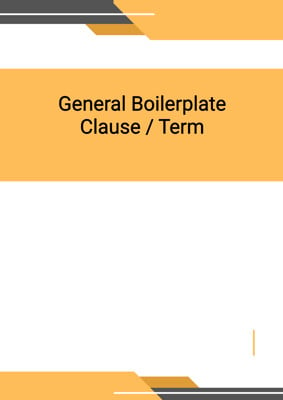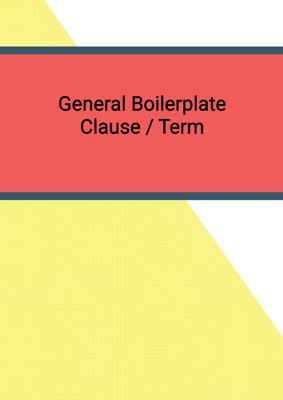How to Tailor the Document for Your Need?
01
Create Document
Click "Create Document" button and the document will be prepared with your account details automatically filled in.
02
Fill Information
Please fill in any additional information by following the step-by-step guide on the left hand side of the preview document and click the "Next" button.
03
Get Document
When you are done, click the "Get Document" button and you can download the document in Word or PDF format.
04
Review Document
Please review the document carefully and make any final modifications to ensure that the details are correct before publication / distribution.
Document Preview
Document Description
The document titled 'Terms and Conditions for Purchase of Goods' is a crucial document that outlines the terms and conditions for the purchase of goods between the buyer and the seller. It serves as a legally binding contract that governs the relationship between the two parties and ensures that both parties are aware of their rights and obligations.
The document begins with a general section that establishes the agreement between the buyer and the seller. It states that the buyer orders the goods specified in the purchase order, and the seller agrees to supply the goods subject to the conditions outlined in the document. It also clarifies that these conditions will govern the contract and exclude any other terms and conditions.
The interpretation section provides definitions for key terms used throughout the document, such as 'business day,' 'buyer,' 'conditions,' 'contract,' 'delivery address,' 'goods,' 'order,' 'price,' 'seller,' 'specification,' and 'writing.' These definitions ensure clarity and understanding of the terms used in the document.
The basis of purchase section explains how the buyer will place orders for goods with the seller using the buyer's standard purchase order form. It states that each order constitutes an offer by the buyer to purchase the goods, and the seller's acceptance of the order creates a contract. It also allows for variations to the contract if agreed upon in writing by both parties.
The specification section outlines the requirements for the quantity, quality, and description of the goods. It states that the goods should conform to the specifications provided by the buyer and be marked, packed, and secured appropriately for delivery. It also allows the buyer to inspect and test the goods during manufacturing and storage to ensure compliance with the contract.
The price section specifies that the price of the goods will be as stated in the order and may include applicable taxes, charges for packaging and shipping, and any discounts agreed upon between the buyer and the seller. It also allows for prompt payment discounts and price adjustments if a third party offers similar products on more favorable terms.
The payment section states that the seller can invoice the buyer after delivery of the goods, and the buyer must pay the price within a specified timeframe. It also allows the buyer to set off any sums owed to the buyer by the seller.
The delivery section outlines the seller's responsibility to deliver the goods to the specified delivery address on the agreed-upon date. It states that the time of delivery is of the essence and allows the buyer to reject late deliveries or claim liquidated damages for delays. It also addresses the buyer's right to inspect and reject goods that do not conform to the contract.
The quality section includes warranties and representations made by the seller regarding the quality, fitness for purpose, safety, and compliance of the goods. It also addresses the seller's responsibility for any defects or non-compliance and the buyer's right to reject or request replacement goods.
The returned goods section establishes the seller's obligation to reimburse the buyer for any returned goods and covers the process for returning and reimbursing the goods. It also addresses the seller's responsibility for insuring the goods and handling recalls or defective goods.
The risk and property section clarifies that the risk of damage or loss of the goods passes to the buyer upon physical possession, while the property in the goods passes upon delivery or payment, depending on the agreed terms.
The document also includes sections on assignment, warranty, indemnity, remedies, termination, force majeure, communications, confidentiality, intellectual property rights of the buyer, waiver, severance, and no rights for third parties. These sections cover various aspects of the contract and provide clarity on the rights and obligations of both parties.
Overall, the 'Terms and Conditions for Purchase of Goods' document is essential for ensuring a clear and mutually beneficial relationship between the buyer and the seller. It covers all aspects of the purchase process, from ordering and specification to pricing, delivery, and quality assurance.
How to use this document?
1. Review the document carefully to understand the terms and conditions for the purchase of goods between the buyer and the seller.
2. Ensure that all necessary information, such as the buyer's and seller's details, is accurately entered in the agreement.
3. Specify the price and completion date of the work to be carried out by the seller to avoid any misunderstandings.
4. Clearly describe the type(s) of goods to be provided by the seller to ensure that both parties are aware of the expectations.
5. Agree on the length of warranty and time of payment after the completion of the work to establish clear payment terms and warranty coverage.
6. Specify the amount of damages per week that the buyer is entitled to if the goods are not delivered by the agreed-upon date to ensure that both parties are aware of the consequences of non-delivery.
7. Comply with all applicable regulations or legal requirements concerning the manufacture, packaging, and delivery of the goods to avoid any legal issues.
8. Clearly mark and pack the goods according to the buyer's instructions and any applicable regulations or requirements of the carrier to ensure safe and undamaged delivery.
9. Allow the buyer to inspect or test the goods during manufacture, processing, or storage to ensure compliance with the contract.
10. Take necessary steps to ensure that the goods comply with the contract if the buyer is not satisfied with the initial inspection or testing.
11. Comply with any request from the buyer to provide instructions or information for accepting delivery of the goods.
12. Keep records of all invoices and payments related to the purchase of goods for proper financial management.
13. Take out and maintain appropriate insurance coverage for liability arising from the goods sold to the buyer.
14. Keep all information regarding the buyer's financial, technological, strategic, or business details confidential and secure.
15. Obtain written consent from the buyer before selling goods bearing the buyer's branding to a third party.
16. Comply with all applicable laws and regulations, including intellectual property rights, when manufacturing, distributing, or selling the goods.
17. Seek legal advice if there are any concerns or disputes regarding the terms and conditions of the purchase agreement.
18. Regularly review and update the terms and conditions to ensure compliance with changing laws and regulations and to reflect any changes in the buyer-seller relationship.
19. Maintain open and clear communication with the buyer to address any issues or concerns that may arise during the purchase process.
20. Terminate the contract if necessary, following the agreed-upon termination procedures, and seek legal advice if disputes cannot be resolved amicably.
Not the right document?
Don’t worry, we have thousands of documents for you to choose from:




















